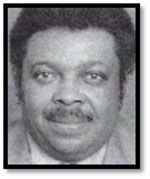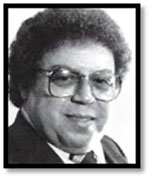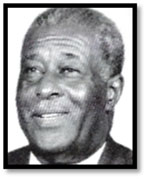Tripping Through Time Story:
A Few of Many Notable African-Americans in Milpitas History
Benjamin Franklin Gross Sr.

“Ben” moved to California from Arkansas to work in the Richmond Ford plant. He was strongly committed to the United Auto Workers Union’s causes of racial equality and worker rights In the early 1950s, Ford management chose Milpitas to be the new site for its larger and more modern plant when Milpitas’ population was almost entirely white and there was virtually no available housing for Ford’s large workforce. Milpitas was still only a small ranching and farming community of about 800 people (including the inmates of the County’s Elmwood facility)
Ben became chairman of the UAW Local 560 Housing Committee and was a relentless advocate for integrated housing, Still very conservative, Milpitas did not warmly embrace his notion and the banks refused to offer mortgage loans to African-American workers, practicing what is referred to as red-lining. Ben Gross fought hard to overcome those barriers and Milpitas became the first planned integrated community in America, resulting in national coverage in the October 13th, 1967 issue of Life magazine.
Bringing the Suunyhills project to fruition was only his first act of public leadership in Milpitas. Follow- ing that was his election as Director of the Milpitas Sanitation District, then three consecutive elections to the city council (1962, 1966, and 1970), as well as his position of mayor during his second term. Ben resigned from the council in 1971 when he was promoted to the UAW headquarters staff in Detroit.
Upon his leaving, he stated that “this is one community which cares about all of its people.”
Albert Augustine Jr.

Albert was one of a number of African-American lay leaders of the interracial Sunnyhills Methodist United Church on Dixon Landing Road, an important community institution from its opening in 1963 that was recently dissolved, forcing its parishioners to find religious guidance elsewhere.
He served on the Milpitas Parks, Recreation, and Cultural Resources Commission (PRCRC) which advises the Recreation Department, City Manager, and City Council on diverse matters such as recommending names (or renames) of parks and streets, suggesting priorities on park improvements and policies, as well as directly supporting events it sponsors including the Bike-Anywhere Day (originally Bike-to-Work Day) and Family Bike Day. Al’s importance in Milpitas and Sunnyhills history is reflected with a park in his name, the Sunnyhills Albert Augustine Jr. Park, which is the second park on the Hetch-Hetchy Trail beginning in Milpitas.
Oliver was another of the important early lay leaders of the interracial Sunnyhills Methodist United Church, and the multi-purpose events building next to the church was named for him. The Sunnyhills Neighborhood Association used to hold its monthly breakfast meeting in Oliver Jones Hall.
Oliver W. Jones

He was one of the original workers at the new Ford plant and he became a labor negotiator for the local UAW Union. He also was a founding member of Milpitas’ Black Caucus opposing segregated housing.
After his death from pneumonia in June 1994 at the age of 78, Mayor Pete McHugh remembered him as a respected civic leader connected to senior-related activities and he proposed naming the Senior Center after Oliver, but the city council decided that they would honor him instead with some other proposal. Council member Barbara Lee suggested that something connected to the Hetch-Hetchy Trail through Milpitas would be more appropriate.
Today, at Jacklin Road, the Oliver W. Jones Memorial Park (originally named after Walter Reuther of UAW fame) is the fourth park along the Hetch-Hetchy Trail.
(Much of this information about these community leaders was collected by Joseph Ehardt from years of articles published in the Milpitas Post)